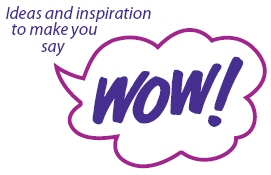Adrienne LaFrance, writing for The Atlantic back in February 2016, reported that a company had analysed 5.3 million emails and discovered what length is most likely to get a response. I have no reason to suspect that it’s changed since then although possibly the perfect length may have shrunk.
Here’s what she had to say:
“Okay, here’s a little test. See if you can decide which email is most likely to elicit a response:
1. Hey, I was thinking about you earlier. Do you want to get pizza?
2. Hey, I’d definitely like to get together next week. Do you want to get pizza?
3. Hey, it would be really great to see you and catch up. Do you want to get pizza?
4. Hey! It would be absolutely wonderful to see you! Do you want to get pizza? I’m so excited!
The correct answer is—drumroll—the second one. It’s in the Goldilocks zone of email tonality: not too positive, not too negative, not flat-out neutral. Just right.
That’s according to a new analysis by the email-efficiency service Boomerang. The company anonymized and aggregated data from more than 5.3 million messages, and figured out which qualities made an email most likely to prompt a response.
Back to all those pizza emails: The first one was too neutral. The third one was better than the first one but not as good as the second one. And the fourth one? Not bad, but not the best. Too enthusiastic is about as effective as seeming emotionless.
Boomerang found that emails that were slightly positive or slightly negative were most likely to get responses. Asking a couple of questions is good, but more than three starts working against you. “Flattery works, but excessive flattery doesn’t,” they wrote in a blog post about the findings. “We also don’t advise penning day-ruining screeds.”
So, for instance, if you want to get the attention of a store manager, Boomerang does not advise an email that ends with, “I hope you die in agony.” Instead, try: “I had an awful experience at your store today. The clerk was very rude. Please do something to make it right.”
So, you know, play it cool. But not too cool. Also, no need to write long. The optimum length for an email is 50 to 125 words.

To put that in literary terms, the six-word opening line of Fahrenheit 451 is too short (“It was a pleasure to burn.”) while the 118-word opening line of A Tale of Two Cities is almost too long. (“It was the best of times, it was the worst of times, it was the age of wisdom, it was the age of foolishness, it was the epoch of belief, it was the epoch of incredulity, it was the season of Light, it was the season of Darkness, it was the spring of hope, it was the winter of despair, we had everything before us, we had nothing before us, we were all going direct to Heaven, we were all going direct the other way—in short, the period was so far like the present period, that some of its noisiest authorities insisted on its being received, for good or for evil, in the superlative degree of comparison only.”)
Which reminds me: I’m up past 450 words in this article so far. Pretty short, journalistically speaking. But if this were an email, it would probably already be in the trash.”
View the actual article here.

Recent Comments